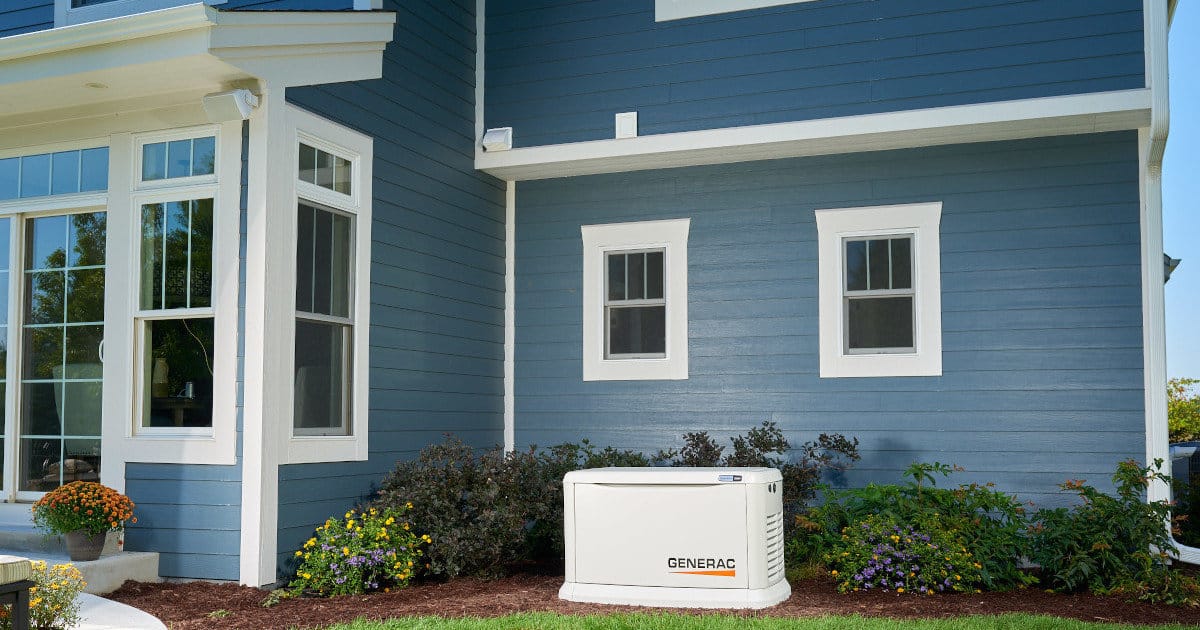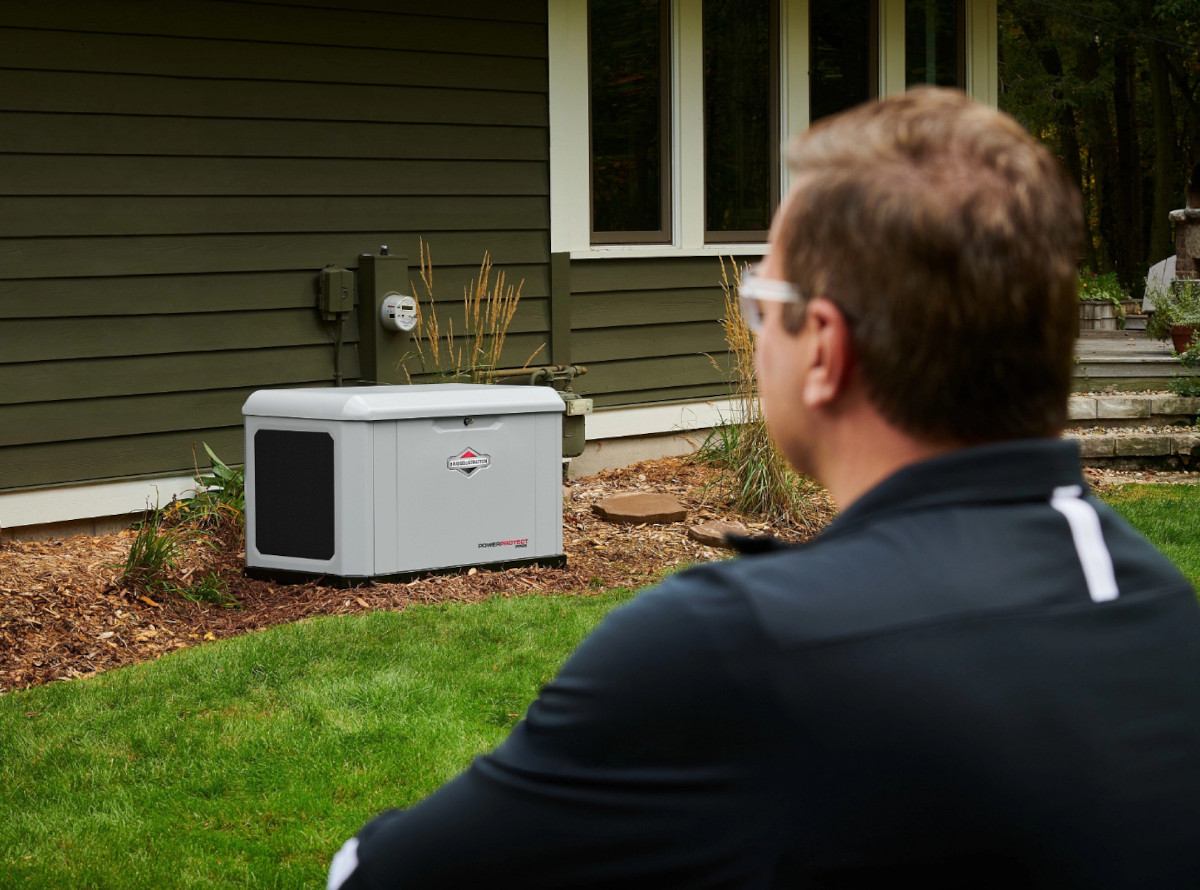A Briggs & Stratton Installer Discusses and Demonstrates a Couple’s New Home Standby Generator Installation
Do You Really Need a 200-Amp Generator for a 200-Amp Service?
It sounds like a simple question with a straightforward answer, but it’s more like buying a pair of shoes. They have to fit right to give you the most mileage and comfort. A 200-Amp service is arguably the most common new service across the country, with a gradually increasing number of 300-Amp and 400-Amp Service installations. As the move toward more major electric appliances and electric vehicle charging increases, homes need more power than ever before.
Size a Generator for 200 Amp Service
Open a circuit breaker main panel with 200-Amp service and you will probably see two columns of circuit breakers. Add up the current ratings on those breakers and you find that the total far exceeds 200 amps.
That’s not a mistake. No one expects to use every circuit at maximum current at the same time. In fact, homes generally use much less current than their service will handle. Tripping the main breaker should only happen by accident, not because you overloaded your service.
What Size Generator Do I Need for 200 Amp Service? We can answer that question in several ways.
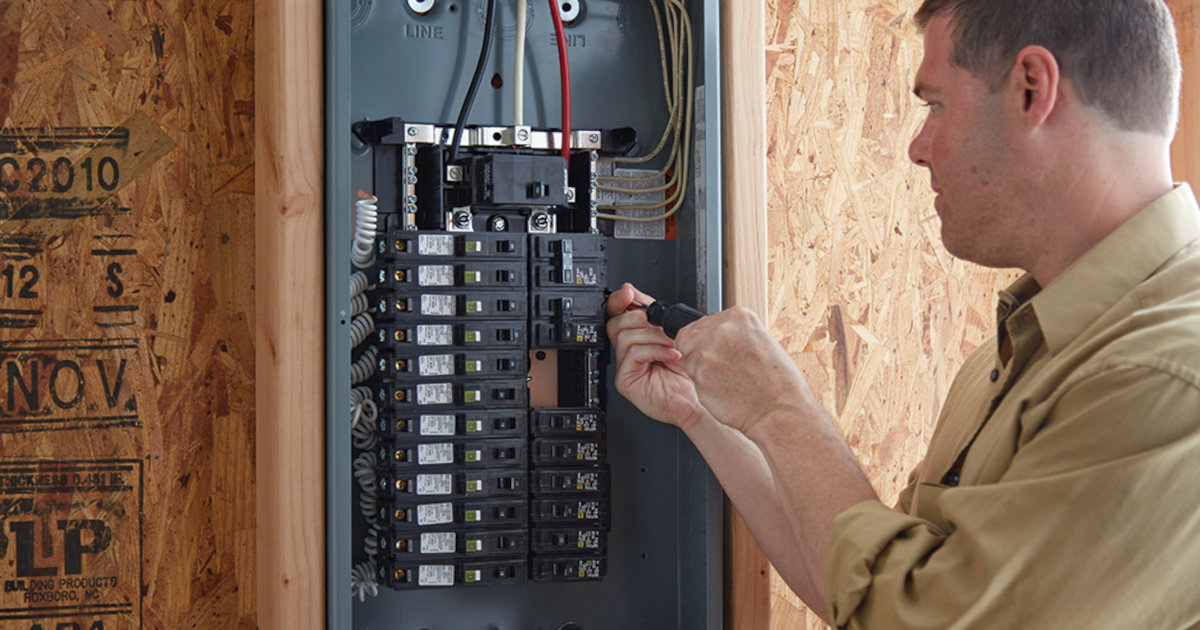
Generator Requirements for a 200-Amp Service Entrance
Some homeowners decide to purchase a generator that gives them the same capacity as the utility company service coming into their home. In the United States, that’s a Single Split Phase 240-Volt service entrance.
Single Split Phase 240 means that a transformer splits a single phase from the utility company into two lines, each at 120 volts, but flowing in the opposite direction from each other. Current direction alternates 60 times per second or at a frequency of 60 Hertz. In a home, most receptacles and lights are 120 volts and use one line of the split service. Some appliances, like air conditioners and electric water heaters, use 240 volts which required both lines of the split service. Electric ranges and electric clothes dryers run on a mix of 120 volts and 240 volts.
In the United States, a 200-Amp generator supplying a 200-Amp Service would require a 48kW Generator.
Other than homeowner preference, a home with 200-Amp Service rarely requires a 200-Amp, 48,000-watt generator.
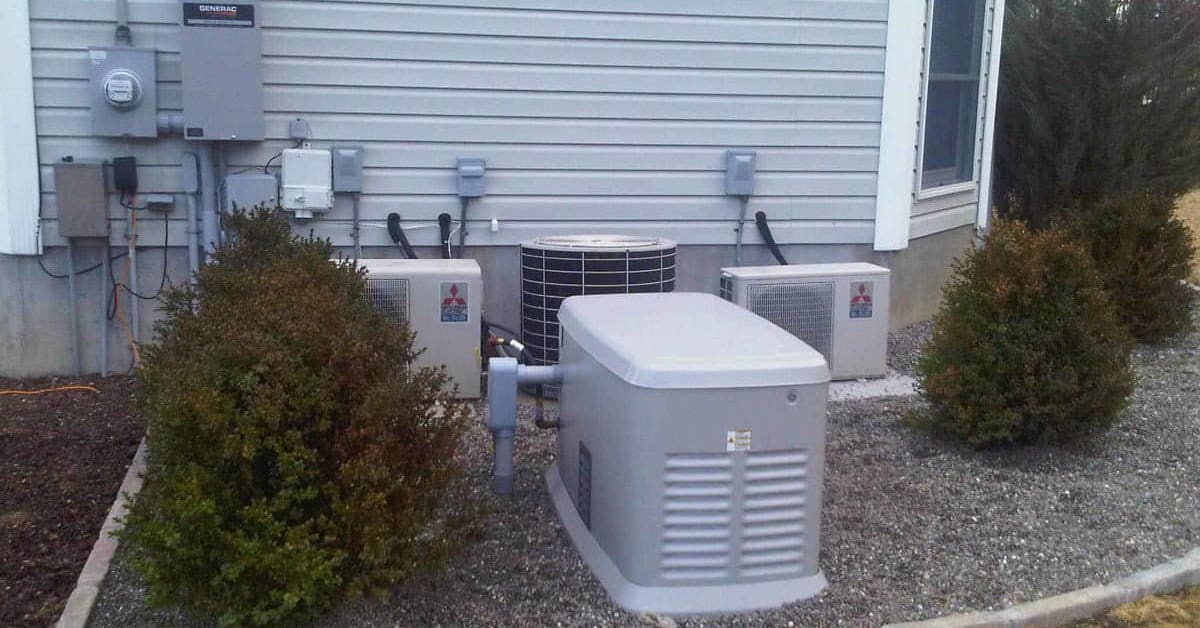
Practical Generator Sizing Considerations
Most backup generator installations follow one of three configurations.
- Whole House Power without Limitation or Management.
- Whole House Power with Power Management.
- Essentials Only
A Whole House Generator without Management allows every appliance, no matter the current requirement, to run without limitation. Use the full power of the electric range while the electric water heater and dryer do their job, the pool heater and pump run, while simultaneously running a couple of 4-ton air conditioners.
How often in everyday life does this scenario occur? And if it does, would it matter much if the water heater or clothes dryer had to wait for another load to finish before it turned on?
Power management allows a smaller, more fuel-efficient generator to run all the loads, but not all at the same time. Perhaps one air conditioner has to wait for another to finish before it starts. Or maybe the electric water heater waits until the dryer finishes its cycle. The generator and automatic transfer switch work together to manage the loads by prioritizing which load uses the generator power.
The final most common option, an essentials-only generator, powers only those loads that the homeowner determines are critical. Furnace, refrigerator, freezer, sump pump, microwave, and one or two lighting circuits. These generators have a lower capacity and power a subpanel or transfer switch with a load center with 8 to 16 circuits.

This 48kW Generator Provides Backup Power to All the Buildings on this Ranch.
Whole House Generator for 200 Amp Service without Management
The electrician or generator installer will do a load calculation to determine the best generator size, much like a new service installation. With a 48kW-50kW generator to provide power through an outage, the generator system still includes safeguards to ensure the generator does not overload. For example, in the unlikely scenario that turning on the electric pool heater would exceed the generator limit, the generator and ATS would prevent the pool heater from running by preventing it from turning on.
This is preferable to exceeding the generator’s capacity and forcing it to overload and trip the generator’s main breaker. However, this scenario is unlikely with a correctly sized whole house system.
The latest power management systems make whole house power without management less necessary than ever before. With a few taps on a smart phone to adjust load priorities, the homeowner enjoys power wherever they need it at any time.
A whole house generator without management for a 200-Amp service requires a load calculation to match the generator with the home’s appliances and electrical needs.
Pros and Cons to a Whole House Generator without Management
- Runs any load at any time without consideration of power use.
- High-capacity generators are more costly and use more fuel.
Sizing Consideration
After the installer does the load calculation, they will choose a generator that meets the full load requirement of the home and recommend a generator that meets the homeowner’s needs.
The Generac 22kW Generator is the most popular generator in the USA.
Generator Size for 200 Amp Service with Power Management
With Power Management, different heavy loads share a generator’s capacity. In a simple scenario, a home with a 22kW generator has two large air conditioners. The generator can run all the other loads and one of the air conditioners, but not both.
On a warm day, the first air conditioner starts. Shortly after, the thermostat for the second air conditioner signals it to start, but the first air conditioner is running, so the power management system makes it wait. Ten minutes later, the first air conditioner stops, making power available to the second air conditioner which is enabled to start and run.
Prioritized management could force the second A/C unit to stop if the first units has to run before the second finishes. On a hot day, this could mean some parts of the house don’t get air conditioning. The homeowner may have to compromise and purchase a larger generator to ensure both generators run as needed.
Pros and Cons to a Whole House Generator with Management
- Smaller and more fuel-efficient generators cost less to purchase and run.
- The homeowner may have to wait for one load to finish before another can run.
Sizing Consideration
After the load calculation is done, the homeowner can choose which circuits get priority and which circuits must have the power to run at any time. The generator chosen will run all regular loads and prioritize the heavy users.
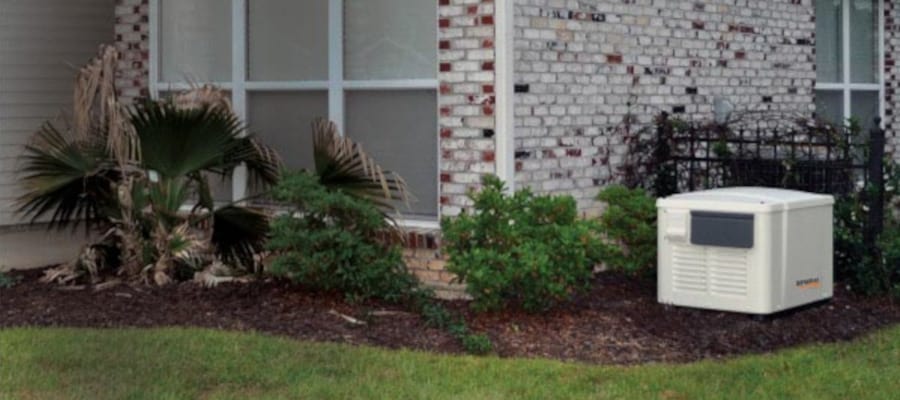
Essentials Only—Generator Size for a 200 Amp Service
Before the invention of home standby generators, the only option was a portable generator with extension cords running to the appliances that needed power. Limited generator capacity prevented most loads from running. Only the most essential appliances received power. Nothing was automatic and several times a day, the homeowner had to shut down the generator for refueling.
An Essentials Only Generator runs the most critical circuits chosen by the homeowner at the time of installation. Common selections include circuits for the refrigerator, freezer, sump pump, furnace, one or two lighting circuits, and one or two kitchen outlets for small appliances like a microwave, crock pot, or electric skillet.
Two advantages make this type of generator desirable—upfront cost and fuel use. Especially in rural areas without access to natural gas, a large generator could exhaust a propane tank much faster than a smaller and more fuel-efficient generator. The smaller generator powers the important circuits and everything else waits for the utility to restore service.
Pros and Cons to an Essentials-Only Generator
- Lower Upfront Cost and Less Fuel Use
- Everyday conveniences may not have power.
Sizing Consideration
The homeowner or installer will determine the amount of power required by the essential circuits selected and choose a generator that meets that requirement.
What Size Generator for a 200 Amp Service
Like a pair of shoes, buy the generator that fits best. It’s a good idea to add some margin for the future and the unexpected times when you need more than usual. Find your everyday load and add 25 percent so the generator does not run at maximum load all the time, but has the extra power when you need it.
A standby generator is not a do-it-yourself project, but you can take on the responsibilities of a general contractor and hire out complex wiring and plumbing to licensed professionals. Before you buy anything, take a plan with all the materials down to your local building department and talk to an inspector to make sure they will approve the installation.
Your inspector is your friend and ensures the people you hire do their jobs and provide you with an installation that won’t jeopardize your insurance policy or make you liable for injury caused by faulty wiring. Don’t pay the final invoice until the installation passes the inspection
Remember that maintenance keeps your investment running for years instead of a few months, especially if you use it often.
Bottom Line The right generator for a 200 Amp Service is the one that best fits your lifestyle and your home with all it’s appliances taken into consideration. You might find that the right generator is a lot more affordable than you think.


